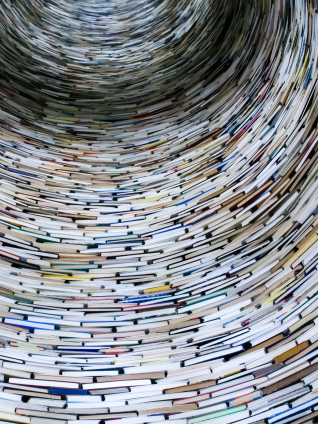Academic articles
Practitioner articles
Working papers
Books
Book chapters
Case studies
Other publications
Subject(s)
Marketing
Keyword(s)
Big data
Organizations crowdsource ideas from individuals. Individuals whose ideas are not selected for implementation often stop to interact with the organization and submit not further ideas. We hypothesize that organizations can motivate newcomers to submit further ideas by providing a so far understudied form of feedback: rejections. We draw on theories of interaction rituals and matching to develop theory how rejections foster a bond between individuals and organizations. To test our theory we examine the crowdsourcing of 70,196 organizations who receive ideas from 962,570 individuals. We make use of difference in how rejections are written to disentangle the mechanisms how rejections affect individuals willingness to continue to interact with the organization. We discuss the implications for research on idea crowdsourcing, social bonding, and creative processes.
Volume
Surrey
ISSN (Print)
2638-4892
Subject(s)
Information technology and systems; Technology, R&D management
Keyword(s)
Cybersecurity, information security, national security, legislation
This article describes the newly enacted or rewritten regulations for the defense against IT attacks as part of IT security law: first the relevant criminal offenses, then the powers of the police and intelligence services, then of the IT security authorities and Internet providers. At the end, the political statements for the 19th parliamentary term will be compared with the remaining need for action in IT security law. Furthermore, the future of IT security law will be discussed in the context of implementation, ongoing development and consolidation.
Volume
34
Journal Pages
215–224
ISSN (Online)
2194-4172
Subject(s)
Economics, politics and business environment
Research has examined who gains authority in knowledge production communities, but has neglected the community members granting authority. We ask: when do community members engage in the authority granting process and why do they support or oppose a candidate? We theorize that community members willingness to engage in the authority granting process depends on their task similarity. We depart from earlier literature by arguing that task similarity is a two-edged sword as a source of support and opposition, which we explain is related to strategic considerations of the voter. Using a unique dataset of all Wikipedia elections from 2003 to 2014, we study when community members vote and whether they vote in favor or against candidates standing for election for administrator positions.
Volume
Surrey
ISSN (Print)
2638-4892
Subject(s)
Human resources management/organizational behavior
Keyword(s)
Leadership, Russia, Russian leadership
Secondary Title
Global leadership perspectives: Insights and analysis
Pages
129–136
ISBN
978-1-47395-344-4
ISBN (Online)
978-1-47395-343-7
Subject(s)
Health and environment; Information technology and systems
Keyword(s)
Medical devices, e-health, IoT, governance, cybersecurity, safety
Subject(s)
Economics, politics and business environment; Ethics and social responsibility; Information technology and systems; Technology, R&D management
Keyword(s)
Digital strategy, digitalization, cybersecurity, digital law, digital government
JEL Code(s)
H11, H40, H77, O38
Pages
271
ISBN
978-3-658-19946-3
ISBN (Online)
978-3-658-19947-0
Subject(s)
Human resources management/organizational behavior
Keyword(s)
Confidence appearance, gender, influence, job performance
ISSN (Print)
0017-8012
Subject(s)
Ethics and social responsibility; Finance, accounting and corporate governance
Keyword(s)
Corporate governance, human rights, modern slavery, supply chains
Volume
17 Spring 2018
Journal Pages
32–33
Subject(s)
Human resources management/organizational behavior; Strategy and general management
Keyword(s)
Organizational behavior, general management
This paper advances novel theory and evidence on the emergence of informal leadership networks in groups that feature no formally designated leaders or authority hierarchies. Integrating insights from relational schema and network theory, we develop and empirically test a 3-step process model. The model’s first hypothesis is that people use a “linear-ordering schema” to process information about leadership relations. Taking this hypothesis as a premise, the second hypothesis argues that whenever an individual experiences a particular leadership attribution to be inconsistent with the linear-ordering schema, s/he will tend to reduce the ensuing cognitive inconsistency by modifying that leadership attribution. Finally, the third hypothesis builds on this inconsistency-reduction mechanism to derive implications about a set of network-structural features (asymmetry, a-cyclicity, transitivity, popularity, and inverse-popularity) that are predicted to endogenously emerge as a group’s informal leadership network evolves. We find broad support for our proposed theoretical model using a multi-method, multi-study approach combining experimental and empirical data. Our study contributes to the organizational literature by illuminating a socio-cognitive dynamics underpinning the evolution of informal leadership structures in groups where formal authority plays a limited role.
© 2018, INFORMS
Volume
29
Journal Pages
118–133
Subject(s)
Management sciences, decision sciences and quantitative methods
Keyword(s)
Decomposition, Shapley value, Potential, Consistency, Higher-order contributions, Balanced contributions
JEL Code(s)
C71, D60
We suggest foundations for the Shapley value and for the naïve solution, which assigns to any player the difference between the worth of the grand coalition and its worth after this player left the game. To this end, we introduce the decomposition of solutions for cooperative games with transferable utility. A decomposer of a solution is another solution that splits the former into a direct part and an indirect part. While the direct part (the decomposer) measures a player's contribution in a game as such, the indirect part indicates how she affects the other players' direct contributions by leaving the game. The Shapley value turns out to be unique decomposable decomposer of the naïve solution.
With permission of Elsevier
Volume
108
Journal Pages
37–48

